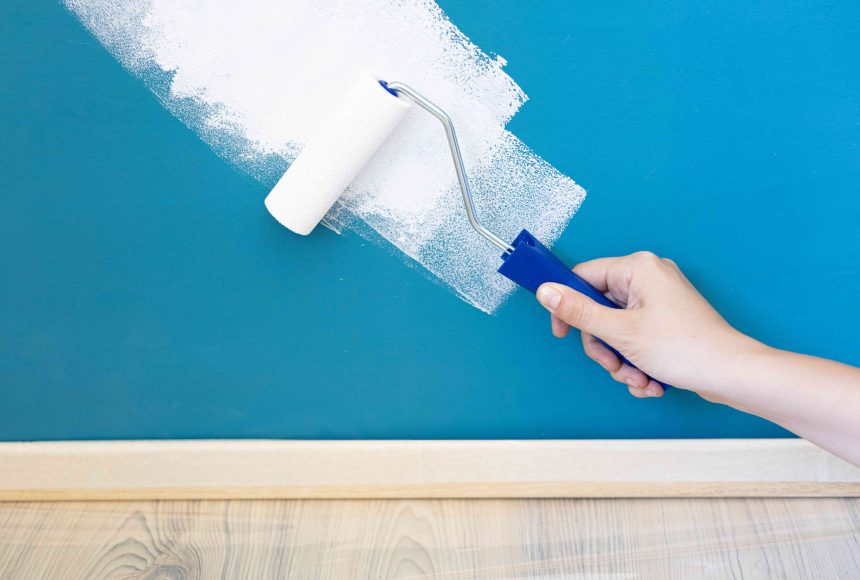It may seem simple to switch up the color of the walls in a room, but the process can become complicated with disappointing end results if you don’t follow the correct steps. We asked painting and interior design experts to offer up their advice on how to avoid a case of painter’s remorse.
Before you start your next project, read these five tips to avoid any mistakes.
Meet the Expert
- Paige NeJame is the owner of CertaPro Painters of the South Shore and Boston.
- Mariya Snisar is the head of interior design at Renowell.
Not Choosing a Color Carefully
Any store selling paint and supplies generally boast a dazzling array of color samples to tempt people itching to make a change. Whether you go in knowing the general shade you want or decide in the store, make sure to take samples since shades may look different from what they seem like.
Paige NeJame, owner of CertaPro Painters of the South Shore and Boston, has heard from many inexperienced painters who can’t understand how their efforts didn’t go as planned. Dissatisfaction with the color is a frequent complaint, she says.
“Grab sample paint pots, paint them on the wall (or a poster board), and live with them for a few days,” NeJame says. “Look at them in the morning and evening, as the light in the room will affect the color. I find that almost immediately, you’ll be able to eliminate a few colors that are all wrong.”
Want more home reno project tips and inspiration? Sign up for our free daily newsletter for the latest how-tos, reno guides, and more!
Misunderstanding Paint Types
The Spruce / Margot Cavin
The color isn’t the only important decision that needs to be made before the painting begins. Did you know that paint also comes in various types, and that each one has a fairly specific use? This knowledge can make a huge difference not only in how the paint goes on but also in how it fares over time.
“An indoor paint won’t be able to withstand the harsh sunlight and rain, while outdoor paint has more chemicals that may be harmful to people who have sensitivities,” says Mariya Snisar, head of interior design at Renowell.
If you are planning a job in the kitchen or a bathroom, you’ll want to pick up a satin enamel. These rooms require this variety because of the increased moisture levels. However, it may not be the right fit for a bedroom because of its long drying time.
Not Prepping the Surfaces
It can be very tempting to want to rush into a project, and changing your wall colors is no different. The walls might look ready to go, but like anything else in the home, they likely have a couple of imperfections and those need to be addressed: small holes and cracks from decor and time.
“These can be filled with wall filler, allowed to dry thoroughly, and sanded before being painted,” Snisar says.
Even if somehow the walls have zero holes and you can’t find any cracks, prep work is still necessary. Surfaces collect dust which can make it difficult for the paint to adhere properly. Wipe down any walls with a mild soap solution before starting your project.
Once things are smooth and clean, you’ll just have to apply the appropriate primer before jumping into the first layer of your chosen color.
“This will enhance the paint’s color and prevent peeling and chipping,” Snisar says.
Not Taping Off Boundaries
The Spruce / Margot Cavin
You will have to also address things that you don’t want to paint by taping off sections to avoid any drips and dribbles when you’re painting. No one wants their new, show-stopping cornflower blue on the room’s molding or the hardware on a door.
Prepping places that you might not even consider to be important to the new look will take some time, but it will be time well spent.
“My painters are experts and often don’t need to tape to paint a straight line,” NeJame says. “But most DIYers don’t have that same steady hand. The time you spend taping isn’t nearly as long as the time you’ll spend redoing the lines or chipping paint off the doorknob.”
Not Letting Things Dry
You will need more than one coat to achieve the best results, and for success, time and temperature are everything. Paint dries quicker in warmer, drier climates, and even the exact timing depends not only on where you are but the variety you are working with.
Starting a second coat when the first isn’t quite dry can cause uneven shading and eventually, cracks and peeling.
“Water-based paints like acrylic take about one hour to dry at moderate to warm temperatures,” Snisar says. “Oil-based paints like enamel can take anywhere from eight to 24 hours to dry completely, depending on the climate. If you don’t allow enamel paint to dry before applying the second coat, it could stay tacky for several days.”
Painting projects can relatively look simple on the surface, but the process takes forethought, prep work, and precision. An overall tip from the experts? Seek guidance from a pro, even if you feel confident. Many paint stores offer free color consulting and will be happy to answer questions to help you get the dream results you desire.







